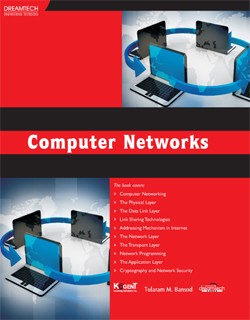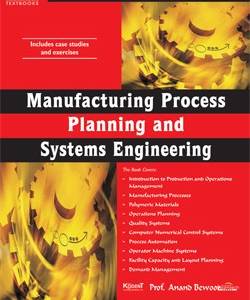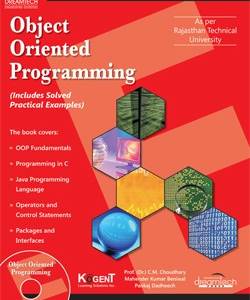Description
The Computer Networks book is an ideal book to learn the fundamentals of networking. This book is unique, as it discusses the essential aspects of computer networking, which includes networking applications, networking hardware, networking software, different types of networking topologies, and different layers of the OSI reference model along with their roles in networking. It also explains how cryptography provides security for data transmission over a network or the Internet. In addition, lots of examples in an easy-to-understand language along with exercises at the end of each chapter are provided in the book.
In this book, you learn about:
-
- Networking applications, networking hardware, network interface card (NIC), cables, hub, bridges, routers, repeaters,
network topologies, network software, and Open Systems Interconnection (OSI) reference model.
-
- Guided transmission media, twisted pair copper cable, coaxial cable, unguided transmission media, wired and wireless
transmission, mobile telephone system, and hubs and switches.
-
- Types of networks at the data link layer, services of the data link layer, functions of the data link layer, and the point-topoint
protocol (PPP).
-
- Rules followed in a computer network, Ethernet, media access control (MAC), fast Ethernet, Gigabit Ethernet, wireless LAN
MAC, and practical selection of wireless cards.
-
- The ipconfig command, IP addresses on the Internet, and why providing the physical address is not sufficient on the Internet.
- Internet Protocol (IP) addressing, IP address classes, classless IP addressing, subnetting, supernetting, IP protocol, and
ICMP protocol.
-
- The transport layer, user datagram protocol (UDP), multiplexing, demultiplexing, ports in UDP, transmission control
protocol (TCP), TCP connection, difference between TCP and UDP protocols, and congestion control.
-
- Socket calls, TCP client server programming, compiling and executing the server and client programs, UDP client server
programming, IP layer programming, and ping implementation.
- Domain name system, remote login using telnet, file transfer and access using FTP, and electronic mail.
- Cryptography, ancient cryptography, classical ciphers, encryption, stream cipher, data encryption standard (des),
steganography, cryptanalysis, linear cryptanalysis, differential cryptanalysis, cryptanalysis of Caesar cipher, frequency
analysis, modern cryptanalysis, hashing, impact of computers on cryptography, applications of cryptography, and network layer security.
 Loading...
Loading...
Tularam M. Bansod is having experience of twenty years in teaching and training. He worked as a lecturer in Computer Technology Department of Saboo Siddik Polytechnic, and Victoria Jubilee Technical Institute (VJTI), in Mumbai. He has delivered lectures on various topics, such as Microprocessor, and Network Security and TCP/IP. He also worked as an Assistant Professor in MCA department of Veermata Jijabai Technological Institute (VJTI). He has given new dimensions to startup Linwire Technologies (www.linwiretek.com) and currently working as a Technical Director in Linwire Technologies.
The proficient teams at Kogent Learning Solutions Inc. and Dreamtech Press have seized the market of engineering textbooks, bringing excellent content in engineering and technical education to the fore. These teams are committed to providing excellence in the quality of content by judiciously analyzing the needs of their readers and ensuring dedication of their authors and editors in catering to these needs.







